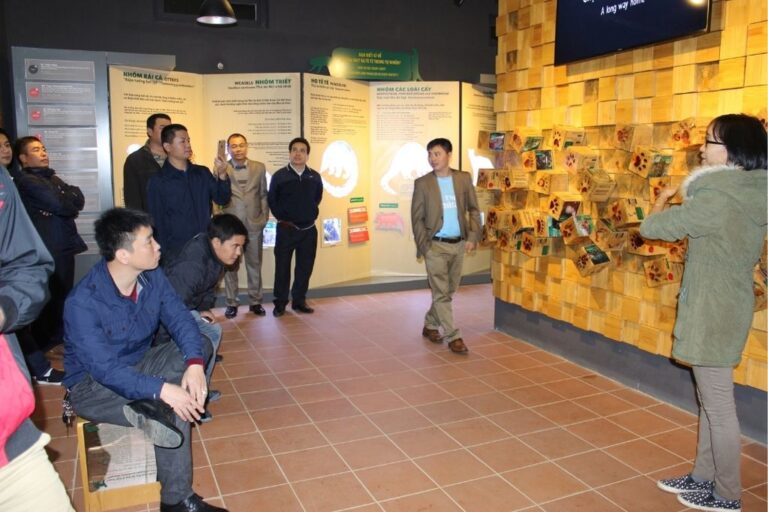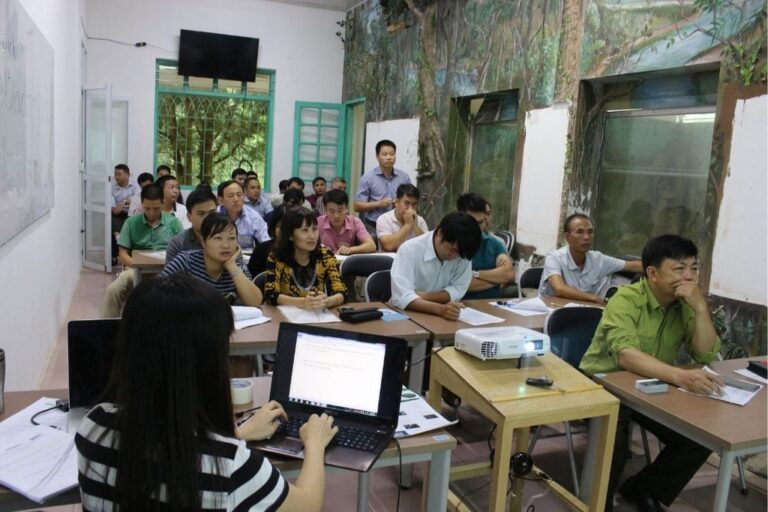Law Enforcement Training On Pangolin Conservation
In Vietnam
AIMS
- Increasing the understanding of local officials about Pangolin conservation, illegal trade, consumption, and law enforcement actions (related to Pangolin crimes and illegal trade) at international, regional, and local levels.
- Building capacity for local enforcement agencies in dealing with confiscated Pangolins such as identifying, handling and caring.
- Promoting responsible and pro-conservation placement of confiscated Pangolins.
- Strengthening working relationships and facilitating cooperation between law enforcement agencies and NPO/NGOs.
ABOUT THE TRAINING
The two 2-day training courses on Pangolin Conservation: Situation, challenges and law enforcement actions were successfully organised at Save Vietnam’s Wildlife, Ninh Binh, Vietnam from 7th to 11th November 2016. Fifty-four participants, including 25 rangers, 21 environmental police and 8 custom officers and leaders from 13 Northern and Central provinces in Vietnam – where they had confiscated a high number of Pangolins from illegal trade, enthusiastically attended the courses.
During the training courses, all participants were provided with adequate knowledge, skills and techniques to increase their understanding of Pangolin conservation, Pangolin illegal trade, consumption and law enforcement actions at international, regional and local levels. They also learnt and practised how to deal with confiscated Pangolins, including identifying, handling and caring procedures. Moreover, the responsibility and pro-conservation placement of confiscated Pangolins were promoted during the training. The importance of caring on-site and rescue procedures at the rescue centres were also presented to help them understand the whole process and cooperation work needed to ensure the best placement for confiscated Pangolins.
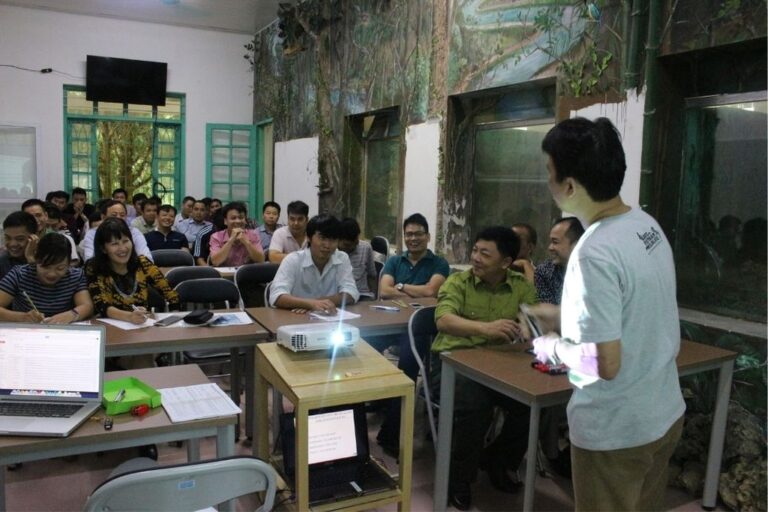
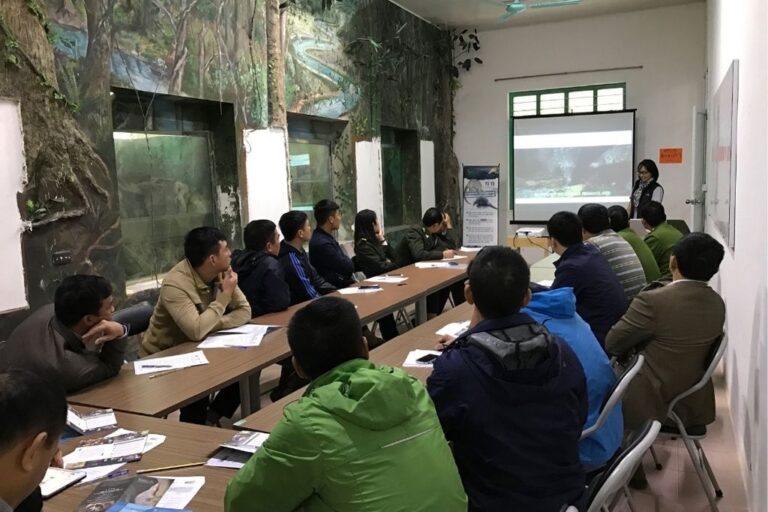
ACCOMPLISHMENTS
- The training courses were carried out as planned and reached the goals. All activities were implemented on time.
- There were 54 participants including rangers, environmental police and custom officers and leaders from 13 provinces in Northern and Central provinces attended the training courses. It reached 90% of the plan (60 participants) – a very high percentage compared with the law enforcement training courses of other organisations.
- The most significant outcome of the courses was a sharp rise in the number of confiscated Pangolins that were informed to SVW through authorities (from 22 Pangolins in 2014, 145 Pangolins in 2015 to 251 Pangolins in 2016). Amongst all the rescues in 2016, the rescue of 127 seized Pangolins from three provinces attending the mentioned training courses – just one month after the training ended – was the strongest proof of long-run cooperation between SVW and Vietnamese law enforcement officers in the future.
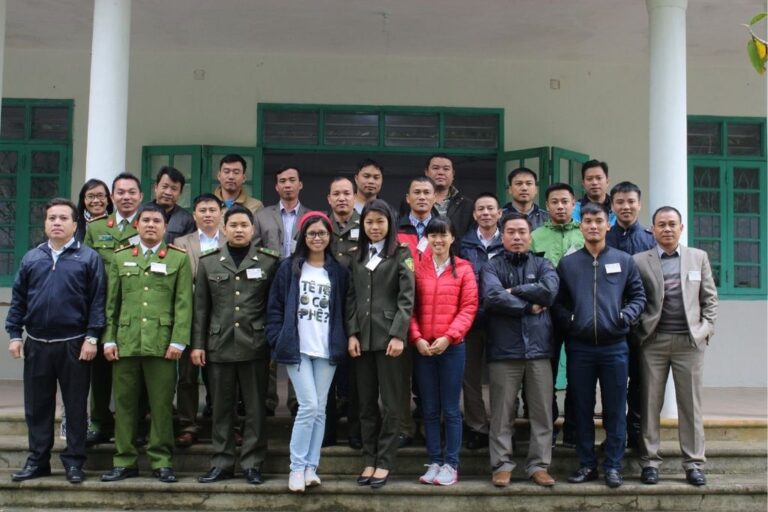
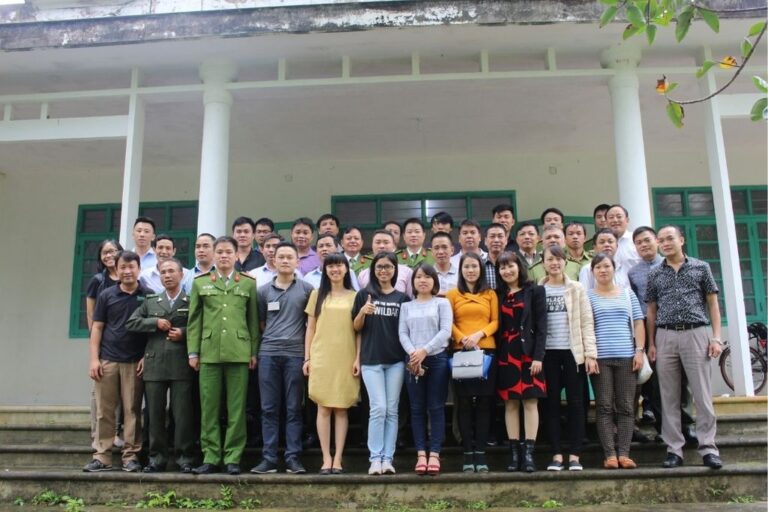
TRAINING DESIGNS
The training courses were strategically designed to not only engage all participants to involve actively in every training activity, but also to evoke their emotions and give them hands-on experience in working with animals and cooperating with others to deal with their work. Training methods were in the forms of lectures/presentations from three trainers, along with many practical exercises, group discussions and hands-on experiences at the rescue centre. Six extra activities and games with the content and messages regarding Pangolin conservation work were also designed for participants to play in break time for more active learning and networking.
Choosing the training location at Save Vietnam’s Wildlife was also one of SVW’s strategies to let participants experience the actual work with animals at the centre (despite few complaints about far and inconvenient transportation to the training location at Save Vietnam’s Wildlife headquarter in Cuc Phuong National Park). There was a night for participants of each training course to visit the Carnivore and Pangolin Education Centre, meet the unreleasable wildlife, listen to their own stories, meet Lucky – the Pangolin ambassador, talk to the animal keepers, experience their work and practice some related skills in caring animals. After that, many participants shared with SVW staff that before the course, they did not care about animals on-site and the procedure to deal with confiscated Pangolins at the rescue centre after the transfer. However, after the training courses at SVW, where they got to meet and listen to the stories of the rescued wildlife and SVW staff, to experience the animal caring procedures, etc. it changed their mind and made them care more about animals and the rescue-release work.
SVW used storytelling approaches which worked very well to evoke emotion and compassion of the participants, inspire and motivate them to be more enthusiastic about Pangolin conservation. The participants shared that they were so inspired by the dedication and passion of SVW staff, the humane work with animals at the rescue centre, as well as the ways of designing and running the training courses. They showed their respect and admiration and then became more active and positive in all activities of the training courses. These were what made the training course more successful than expected.
Four main training materials (Pangolin fact sheet, Pangolin identification poster, handle and placement poster, handle, placement and rescue, release handbook) were developed, printed out and provided to all participants. Other educational activities were combined to encourage participants to participate in training activities.
The evaluation was designed to assess participants’ understanding before and after the course (in which the questionnaire included five questions related to Pangolin identification, threats, farming, placement, rescue and release work) and evaluate the workshop design as well. The result was positive. To demonstrate, 76.1% participants understood the main point to identify two pangolin species by the number of scale rows on their tails (while it’s only 23.9% in the pre-survey); 95.83% of participants confirmed farming Pangolins for commercial purposes is not a solution for conservation with adequate explanation (pre-survey: 86.27%); 100% participants liked the training course and would like to attend this type of training course in future.
ACTIVITIES AND PHOTOS





